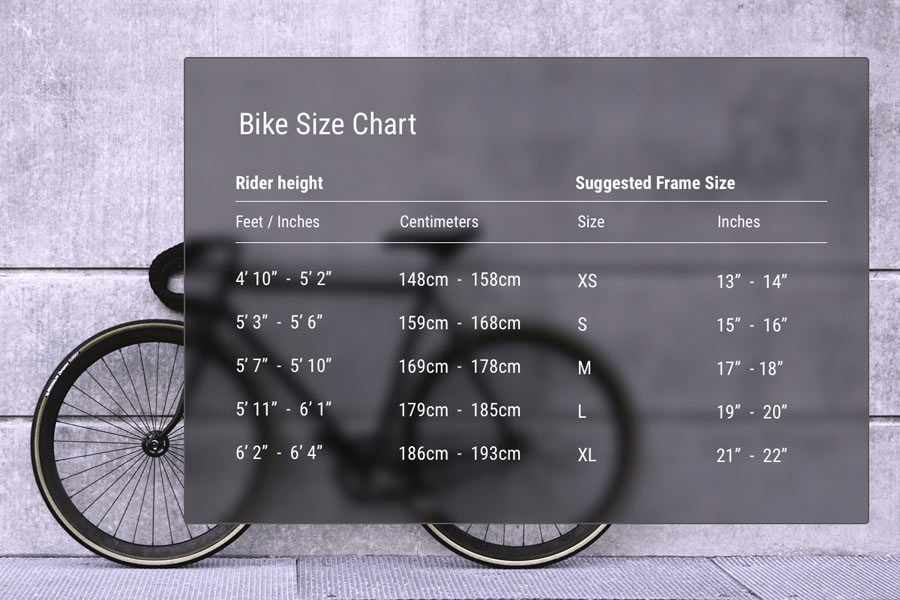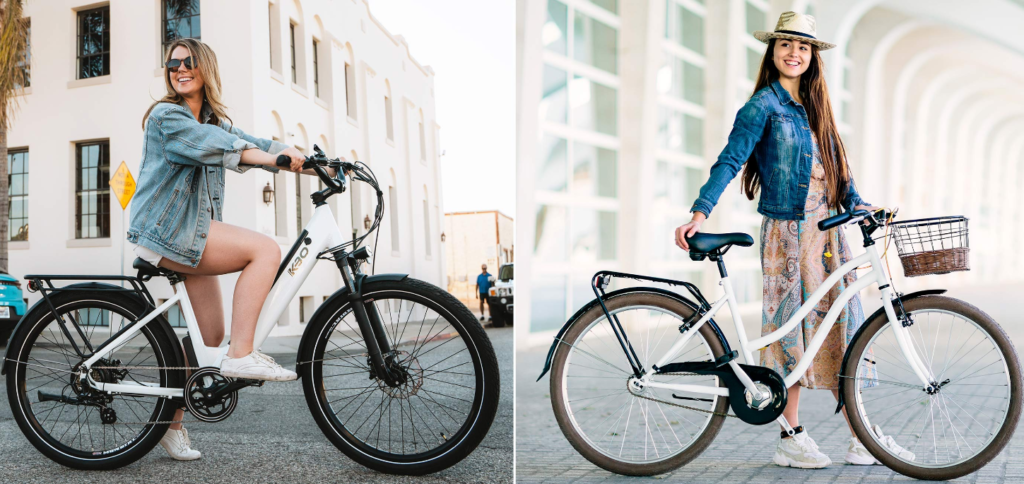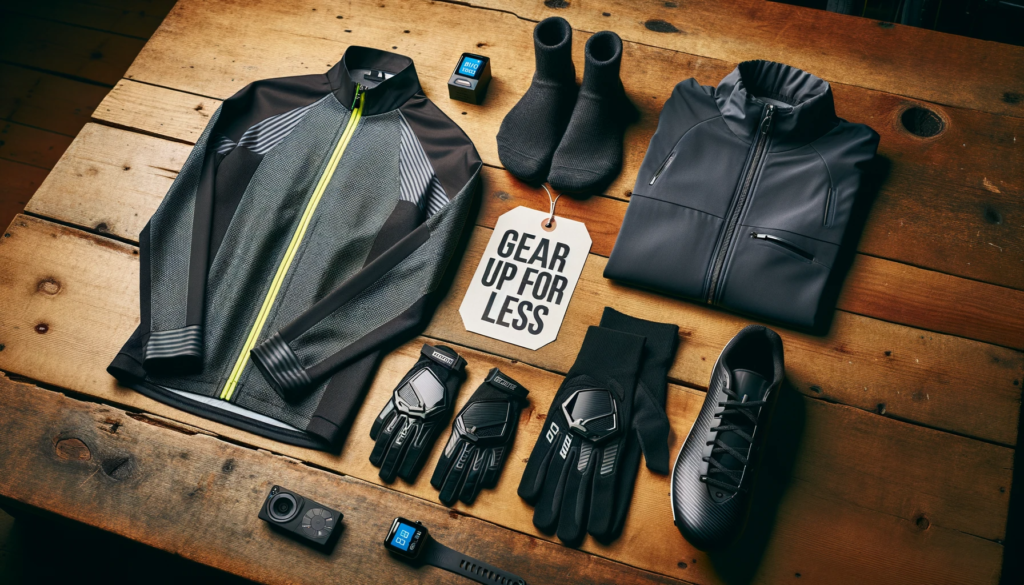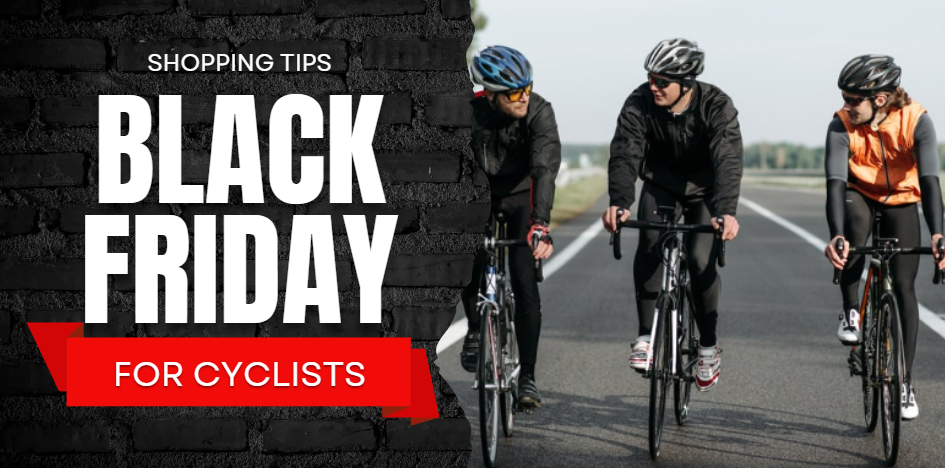To choose the right road bike size, measure your inseam and refer to the manufacturer’s sizing chart. Consider your riding style and fit preferences.
Picking the right road bike size can make or break your cycling experience. A bike that fits you well feels comfortable, boosts your performance, and keeps you safe.
On the flip side, a bike that’s too big or too small can leave you sore, pedaling awkwardly, or even injured.
Don’t worry—I’m here to walk you through the process of how to choose the right road bike size step by step. By the end, you’ll know exactly how to find the perfect road bike size for your body. Let’s get started!
Why the Right Bike Size Matters
Imagine riding a bike that’s way too big. Your legs can’t reach the pedals properly, and your arms stretch too far to grip the handlebars. Or picture one that’s too small—your knees are crammed up, and you feel hunched over.
Neither sounds fun, right? Choosing the right bike size is all about comfort and efficiency.
A well-fitted bike lets you pedal smoothly, control it easily, and ride longer without pain. Plus, it helps avoid issues like knee strain or backaches down the road. So, taking the time to get this right is worth it. Ready to figure it out?
What Does Bike Frame Size Mean?
For road bikes, the size refers to the frame, specifically the length of the seat tube. That’s the tube running from the pedals up to where the saddle sits.
It’s measured from the center of the bottom bracket (where the pedals connect) to the top of the seat tube. You’ll usually see this number in centimeters—like 52 cm or 56 cm.
Simple, right?
This measurement tells you how tall the bike is, which is the starting point for finding your fit. Keep in mind, though, that brands might measure slightly differently, so we’ll dig deeper later.

Credit: www.pinterest.com
How to Measure Yourself for a Bike
Now, let’s get some numbers about you. You’ll need two measurements: your height and your inseam. Don’t worry—it’s easy to do.
Measuring Your Height
Stand against a wall with no shoes on. Keep your feet flat and your back straight. Have a friend measure from the floor to the top of your head. Write that number down in centimeters (or convert it from inches). That’s your height—super straightforward.
Measuring Your Inseam
Your inseam is a bit more involved, but it’s key for accuracy. Here’s how to do it:
- Stand barefoot with your back against a wall.
- Spread your feet about 6 inches apart.
- Grab a book or a flat object and press it up between your legs, right against your crotch—like where a saddle would sit.
- Keep it level, then have someone measure from the top of the book to the floor.
That’s your inseam length in centimeters. Do it a couple of times to make sure it’s spot-on. Why does this matter? Your inseam shows how long your legs are, which affects how high the saddle needs to be and if you can stand over the bike comfortably. Got your numbers? Great—let’s move on.
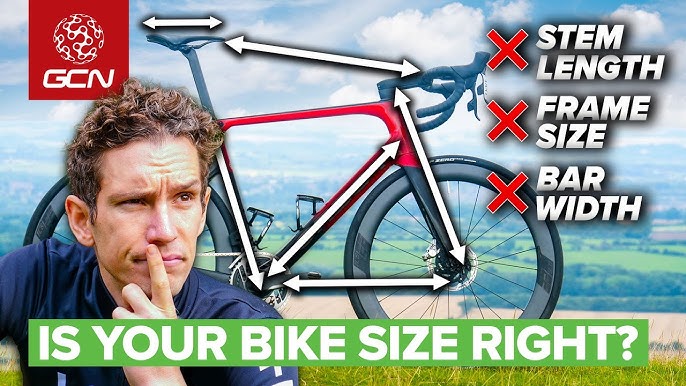
Credit: www.youtube.com
Finding Your Ideal Frame Size
With your height and inseam ready, you can start figuring out the right frame size. There are two ways to do this: a quick height chart or a more precise inseam formula. Let’s break it down.
Using a Height Chart
Your height gives you a rough idea of what frame size might work. Here’s a general guide for road bikes:
- 152–160 cm tall: 48–50 cm frame
- 160–168 cm: 50–52 cm
- 168–175 cm: 52–54 cm
- 175–183 cm: 54–56 cm
- 183–190 cm: 56–58 cm
- 190–198 cm: 58–60 cm
So, if you’re 170 cm tall, a 52–54 cm frame is a good starting point. But here’s the catch—height alone isn’t perfect. People have different leg and arm lengths, so let’s refine it.
Using Your Inseam
For a better fit, use your inseam. Take that number in centimeters and multiply it by 0.65 to 0.67. For example, if your inseam is 80 cm:
- 80 × 0.65 = 52 cm
- 80 × 0.67 = 53.6 cm
That means a frame around 52–54 cm should suit you. This method focuses on your leg length, which is more accurate for setting the saddle height and ensuring your feet reach the pedals comfortably. However, every bike brand has its own sizing quirks. Check their specific chart if you can—it might tweak the numbers a bit.
Beyond the Numbers: Other Fit Considerations
Height and inseam are the big players, but a few other things can nudge your choice. Let’s look at them.
Body Proportions
Not everyone’s built the same. If your legs are long compared to your torso, you might need a slightly larger frame. If your arms are long, you’ll want a bike where the handlebars aren’t too close. The frame size sets the height, but the top tube—the horizontal part from the saddle to the handlebars—affects your reach. A good fit balances both.
Flexibility
How bendy are you? If you’re super flexible, you might handle a lower, more stretched-out position. If not, you’ll want a more upright ride, which could mean tweaking the frame size or adjusting the handlebars later.
Riding Style
What’s your plan—racing or relaxed rides? Racers often pick a size for a low, aerodynamic stance. Casual riders might go a bit bigger for comfort. For most beginners, though, sticking to the height-and-inseam method works fine. You can fine-tune the rest with the saddle and handlebars.
The Importance of a Test Ride
Numbers are a great start, but riding the bike seals the deal. Always test it before you buy. Here’s what to check:
- Handlebar Reach: Can you grip them without stretching too far or feeling cramped?
- Pedaling: At the bottom of the pedal stroke, your knee should have a slight bend—not locked straight or too bent.
- Standover Height: Straddle the bike with both feet flat on the ground. You should have 1–2 inches of clearance between your crotch and the top tube.
Ride for at least 10 minutes if you can. Shift gears, brake, and try a small hill. Feel any discomfort in your back or knees? That’s a sign the size might be off. Also, make sure the saddle height adjusts to your liking—most bikes let you move it up or down easily.
When to Seek Professional Help
Want the best fit possible?
A professional bike fitter can make it happen. They’ll measure everything—your legs, arms, flexibility, even how you sit—and adjust the bike perfectly.
It’s awesome if you’ll ride a lot or have specific needs, like an old injury. But let’s be real—not everyone can swing the cost or find a fitter nearby. No stress—the steps here will still get you a solid fit on your own.
Common Mistakes To Avoid
- Settling for the Wrong Size: One common mistake is settling for a road bike size that is either too big or too small. Riding a bike that doesn’t fit properly can lead to discomfort and potential injuries, so it’s crucial to get the right size.
- Disregarding Individual Body Proportions: Another mistake is disregarding individual body proportions when choosing a road bike size. Everyone’s body is unique, so it’s essential to consider factors such as inseam length, torso length, and arm reach to ensure a proper fit.
Frequently Asked Questions
What Size Road Bike Do I Need For My Height?
The size of the road bike you need depends on your height. To determine the right size, measure your inseam and compare it to the bike’s frame size chart. Generally, a person with a height of 5’4″ to 5’7″ would need a small-sized bike, while those who are 5’8″ to 5’11” would need a medium-sized bike.
How Do I Know My Size For A Road Bike?
To determine your road bike size, measure your inseam and refer to the manufacturer’s sizing chart.
Is It Better To Size Up Or Down Road Bike?
For road bikes, it’s better to size down if in between sizes for a more comfortable fit.
How To Tell If A Road Bike Is Too Big?
To tell if a road bike is too big, ensure your feet can touch the ground comfortably while seated. Check that your arms are not fully extended when holding the handlebars. Adjust the seat and handlebar height for a proper fit.
Wrapping It Up: Enjoy Your Ride
So, here’s the rundown. Start by understanding frame sizes—they’re all about the seat tube length. Measure your height and inseam to get your key numbers. Use a chart or the inseam formula (multiply by 0.65–0.67) to pick a frame size.
Think about your body proportions, flexibility, and riding goals to tweak it. Then, test ride to make sure it feels right. If you can, get a pro fit for that extra edge.
Taking these steps means you’ll end up with a bike that fits like a glove. And trust me—that makes every ride way more fun. So, go find your perfect road bike, hit the pavement, and enjoy the ride!

